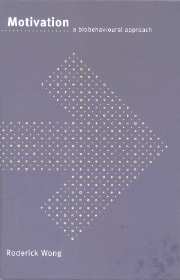Book contents
- Frontmatter
- Contents
- Preface and acknowledgements
- 1 Introduction and perspective
- 2 Mating and reproductive activities
- 3 Parental/maternal activities
- 4 Feeding activities
- 5 Food selection
- 6 Drinking activities
- 7 Stimulus seeking and exploratory activities
- 8 Aversive motivation systems: fear, frustration and aggression
- 9 Social motivation: attachment and altruism
- 10 Conclusions and retrospective
- References
- Author index
- Subject index
2 - Mating and reproductive activities
Published online by Cambridge University Press: 10 December 2009
- Frontmatter
- Contents
- Preface and acknowledgements
- 1 Introduction and perspective
- 2 Mating and reproductive activities
- 3 Parental/maternal activities
- 4 Feeding activities
- 5 Food selection
- 6 Drinking activities
- 7 Stimulus seeking and exploratory activities
- 8 Aversive motivation systems: fear, frustration and aggression
- 9 Social motivation: attachment and altruism
- 10 Conclusions and retrospective
- References
- Author index
- Subject index
Summary
Until recently most psychologists studying reproductive behaviour focused on proximate causal mechanisms and paid scant attention to issues concerning the functional aspects of such behaviour. There are some outstanding exceptions. Although Donald Hebb is best remembered for his seminal work on physiological models of learning, memory and other cognitive processes, his views on evolution and behaviour also revealed foresight in the following statement. ‘The function of behavior in evolution is simply to keep an animal alive and well enough to mate and in other ways to get the next generation established, the process then repeating itself and leading to still another generation’ (Hebb, 1972, p. 171). Few psychologists during that era considered ultimate causal mechanisms in their theoretical analysis aside from short passing reference to the significance of evolutionary factors in the explanation of behaviour. They seldom ventured beyond that level. Textbooks on the psychology of motivation with an experimental emphasis tended to focus on proximate causal mechanisms underlying rat behaviour (Beck, 1978; 1990; Bindra, 1959; Bolles, 1967; Brown, 1961; Hall, 1961; Young, 1961).
Following the publication of E. O. Wilson's Sociobiology: the new synthesis (1975) and R. Dawkins' The selfish gene (1976), a new group of psychologists were inspired by the implications of evolutionary factors to the explanation of motivational processes. This ‘new generation’ of behavioural scientists which include Buss (1989, 1999), Cosmides & Tooby (1987; 1992; 1995), Daly & Wilson (1983; 1988; 1994) and Symons (1979) have reconceptualised motivational analysis through their incorporation of evolutionary theory.
- Type
- Chapter
- Information
- MotivationA Biobehavioural Approach, pp. 13 - 58Publisher: Cambridge University PressPrint publication year: 2000



